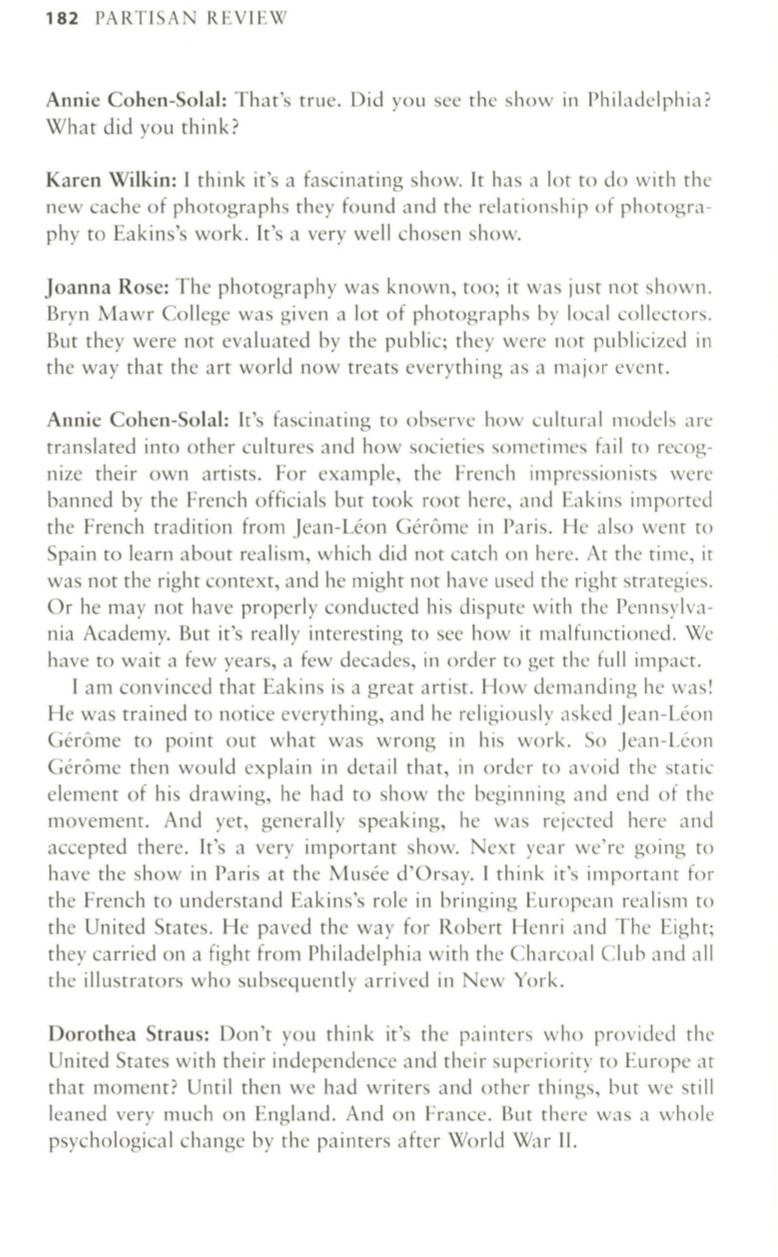
18 2
PARTISAN REVIEW
Annie Cohen-Solal: That's true. Did you see the show in Philadelphia?
What did you think?
Karen Wilkin: I think it's a fascinating show. It has a lot
to
do with the
new cache of photographs they found and the relationship of photogra–
phy to Eakins's work. It's a very well chosen show.
Joanna Rose: The photography was known, too; it was just not shown.
Bryn Mawr College was given a lot of photographs by local collectors.
But they were not evaluated by the public; they were not publicized in
the way that the art world now treats everything as a major event.
Annie Cohen-Solal: It's fascinating to observe how cultural models are
translated into other cultures and how societies sometimes fail to recog–
nize their own artists. For example, the French impressionists were
banned by the French officials but took root here, and Eakins imported
the French tradition from Jean-Leon Gerome in Paris. He also went
to
Spain to learn about realism, which did not catch on here. At the time, it
was not the right context, and he might not have used the right strategies.
Or he may not have properly conducted his dispute with the Pennsylva–
nia Academy. But it's really interesting to see how it malfunctioned. We
have to wait a few years, a few decades, in order to get the full impact.
I am convinced that Eakins is a great artist. How demanding he was!
He was trained to notice everything, and he religiously asked Jean-Leon
Gerome to point out what was wrong in his work. So Jean-Leon
Gerome then would explain in detail that, in order
to
avoid the static
element of his drawing, he had to show the beginning and end of th e
movement. And yet, generally speaking, he was rejected here and
accepted there. It's a very important show. Next year we're going
to
have the show in Paris at the Musee d'Orsay. I think it's important for
the French to understand Eakins's role in bringing European realism
to
the United States. He paved the way for Robert Henri and The Eight;
they carried on a fight from Philadelphia with the Charcoal Club and all
the illustrators who subsequently arrived in New York.
Dorothea Straus: Don't you think it's the painters who provided the
United States with their independence and their superiority to Europe at
that moment? Until then we had writers and other things, but we still
leaned very much on England. And on France. But there was a whole
psychological change by the painters after World War II.


